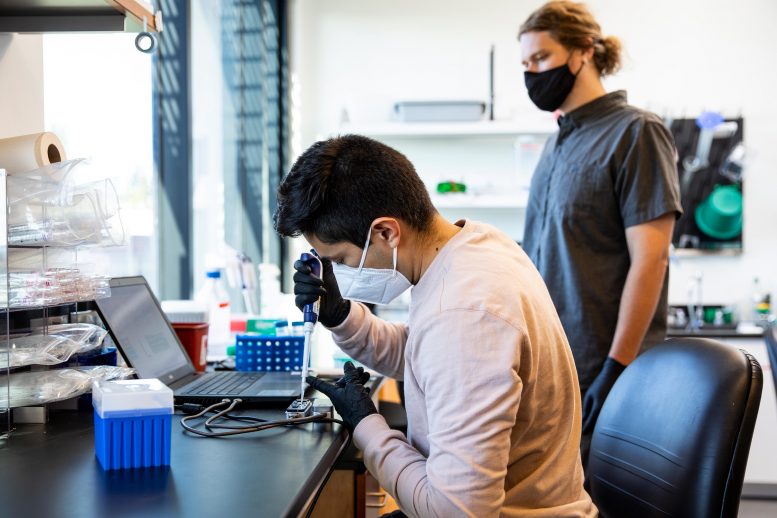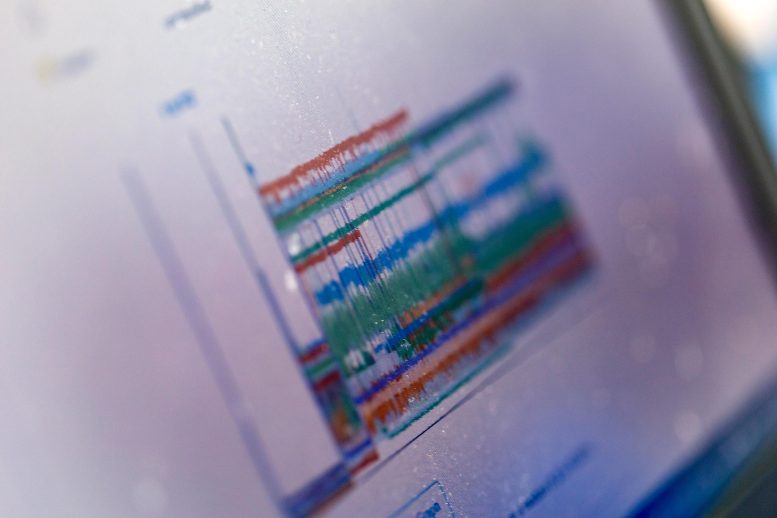
University of Washington and Microsoft researchers have introduced a new class of reporter proteins that can be directly read by a commercially available nanopore sensing device. Here, UW doctoral student Nicolas Cardozo pipettes a solution containing NanoporeTERs onto a portable MinION device as UW research assistant professor Jeff Nivala looks on. Credit: Dennis Wise/University of Washington
Genetically encoded reporter proteins have been a mainstay of biotechnology research, allowing scientists to track gene expression, understand intracellular processes, and debug engineered genetic circuits.
But conventional reporting schemes that rely on fluorescence and other optical approaches come with practical limitations that could cast a shadow over the field’s future progress. Now, researchers at the
The study was published on August 12, 2021, in Nature Biotechnology.

University of Washington and Microsoft researchers have introduced a new class of reporter proteins that can be directly read by a commercially available nanopore sensing device. Raw nanopore signals stream from the MinION device, which contains an array of hundreds of nanopore sensors. Each color represents data from an individual nanopore. The team uses machine learning to interpret these signals as NanoporeTERs barcodes. Credit: Dennis Wise/University of Washington
“NanoporeTERs offer a new and richer lexicon for engineered cells to express themselves and shed new light on the factors they are designed to track. They can tell us a lot more about what is happening in their environment all at once,” said co-lead author Nicolas Cardozo, a doctoral student with the UW Molecular Engineering and Sciences Institute. “We’re essentially making it possible for these cells to ‘talk’ to computers about what’s happening in their surroundings at a new level of detail, scale and efficiency that will enable deeper analysis than what we could do before.”
For conventional labeling methods, researchers can track only a few optical reporter proteins, such as green fluorescent protein, simultaneously because of their overlapping spectral properties. For example, it’s difficult to distinguish between more than three different colors of fluorescent proteins at once. In contrast, NanoporeTERs were designed to carry distinct protein “barcodes” composed of strings of